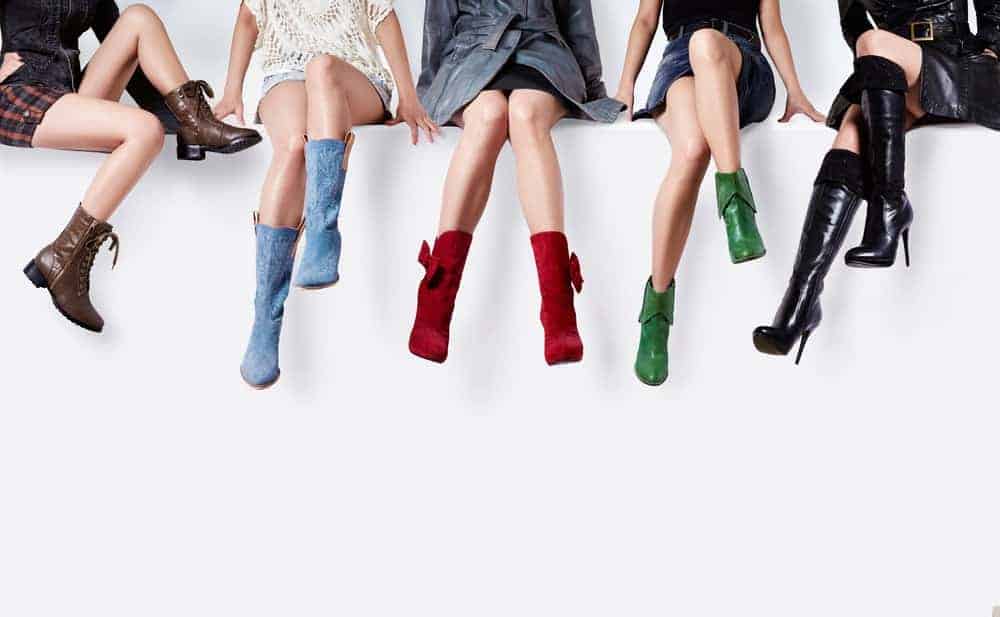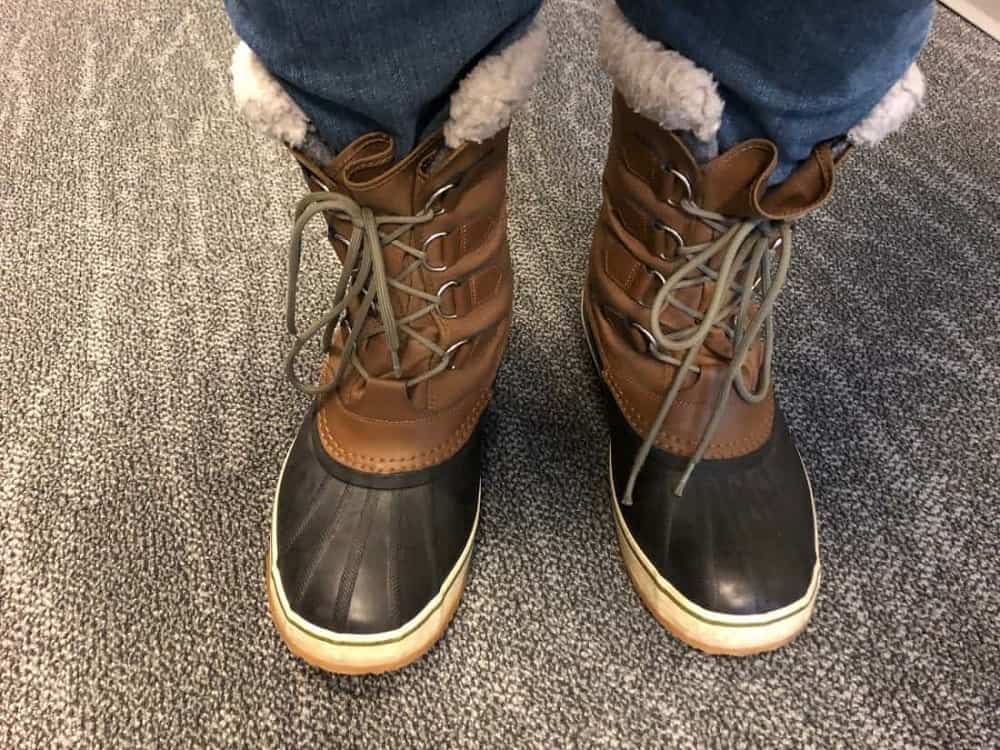When shopping for 7mm rubber boots for camping, working, hunting, or rainy days, start here to learn the materials used, design options, major manufacturers, and where to buy these hearty, insulated muck boots.

When adding to your outerwear gear, consider a pair of 7 mm rubber boots to protect your feet and legs from cold and wet conditions. The 7 mm in their name refers to the upper thickness. 7 mm equals approximately one-quarter inch.
These rubber boots typically reach about knee height although some go over the knee. You can wear them in any wet, muddy situation and find your feet still dry. They go by many other names, too, such as rain, mud, or utility boots. Boots of this type share two features:
- high-traction soles,
- rubber, neoprene, or another similar material impervious to water.
You can find basic pairs of these boots for less than $20 and designer pairs for about $150. You may sometimes find duck boots advertised or sold with rubber boots, but they aren’t the same thing.
Table of Contents
- 7mm Boot Options
- Which Boot Brands to Try
- Where can you buy 7mm rubber boots?
- Frequently Asked Questions
7mm Boot Options
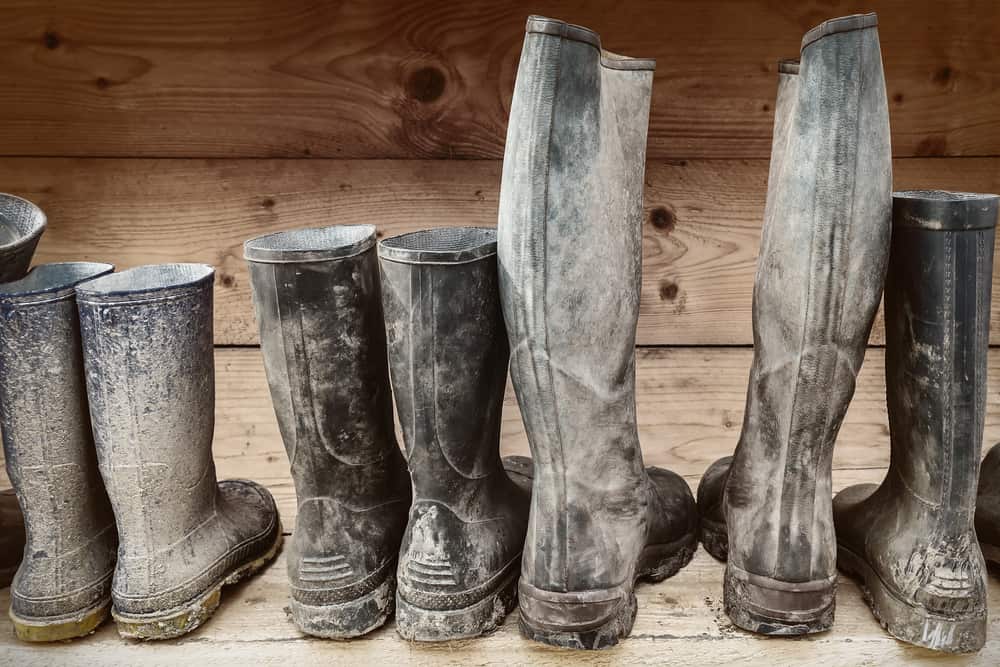
A multitude of manufacturers make these boots, including Bogs, Dunlop, and Kamik Jessie. Purchasers typically look for traction, comfort, water-tightness, and affordability in these boots. You can find these boots made of natural rubber with a latex base and synthetic rubber with a petroleum base.
Both resist water, but neither lets your feet breathe while wearing them. For that, you would need a waterproof hiking boot. This means you have to decide on a trade-off when buying these boots.
Do you want a less sweaty foot or better water protection? If the latter matters more, choose a high-cut muck boot, so you can trek through deeper water and mud without getting messy. If the former matters more, you choose a low- or mid-cut muck boot.
Upper Design Differences
Some models of these boots use a rubber, one-piece upper molded to the boot’s outsole and midsole. Others of these rubber boots, designed for heavy-duty wear, use a flexible neoprene boot inside the boot. It encases the foot as does a rubber shell.
Boot Tread
The boot tread on the outsole either gathers or sheds debris in the field. The lugs in the outsole’s tread determine this. You get better traction with deep lugs, but you also pick up more mud. If the lugs have too little space between them, debris logs in the nooks and crannies of the lugs. Shorter lugs trap less dirt but provide less traction.
Choosing the Right Size Boots

Source: Cabelas
Here’s the thing. These boots were not designed for fashion and when they first appeared on the scene, only men wore them. Most items of fashion and utility have come a long way, baby, and recognized that they need to manufacture in both women’s and men’s sizes. Rubber boots or muck boots missed that memo.
7 mm rubber boots come in unisex sizes that actually default to men’s sizes. When a woman purchases these boots, she has to try them on first because the sizes listed will not relate at all to the size of shoe she actually wears. To work around this and sell more online, some manufacturers offer a sizing chart that provides the unisex size as it relates to men’s and women’s sizes.
The other sizing frustration many people run into is that these boots usually come in only whole sizes. With no half sizes, most people have to choose between a tight fit and boots that feel like they might fall off. Deciding between these two things depends on whether you will typically wear thick socks with these boots or thin ones.
If you want a tall slip-on boot, you need a pair with space at the ankles to let you move your foot easily and quickly in and out of the boot. The bad thing about these styles of boots is that your foot slides around inside the roomy area of the ankle and you develop blisters. You could purchase a duck boot instead of rubber work boots, but you would have to lace into them every time and then unlace them to get out of them. This does let you customize your fit though, and it still gets you the reinforced rubber upper.
Boot Materials
Boots made of neoprene cropped up in 1930. This synthetic rubber provides insulation plus water and oil barrier. These boots became favorites in construction settings, the oil and gas industry, farming, ranching, and other industries where workers needed warmth and dryness for their feet and legs.
Natural rubber boots use latex as a material. These require added insulation since they provide mostly waterproofing. Both materials only require spraying with a hose to clean them.
Which Boot Brands to Try
While many boot options exist, you need a starting point. These three options provide a mixture of inexpensive and expensive options that keep your feet dry, warm, and comfortable.
Bogs Classic Ultra High
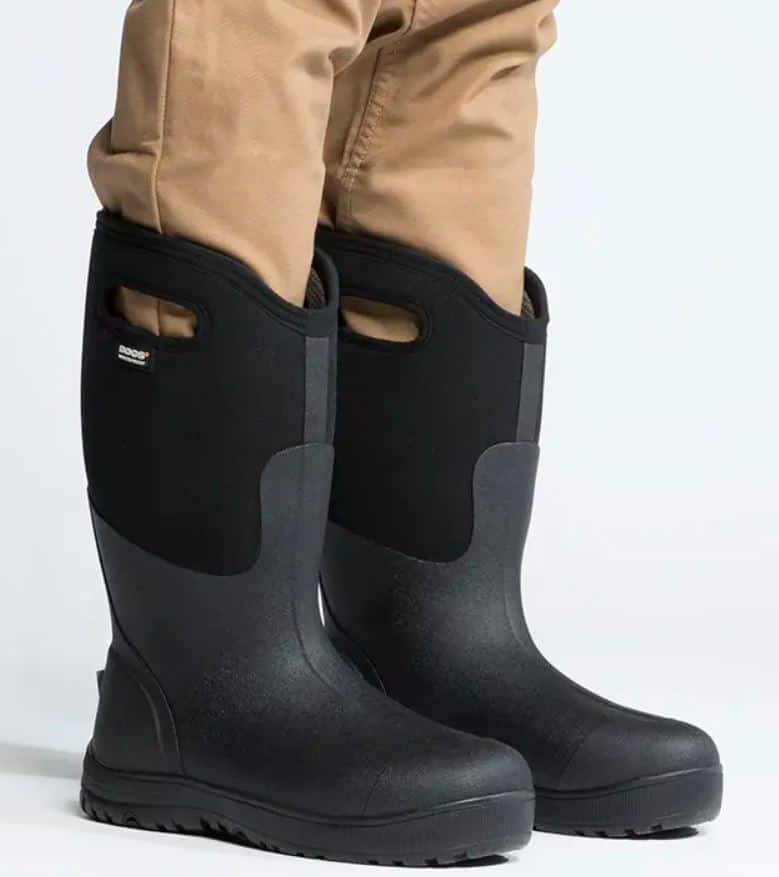
Source: Bogs
You will pay about $130 for a pair of Bogs, but their rubber and neoprene uppers perform well in all situations. Choose from two boot heights – mid and tall. Their Classic Ultra High boot provides traction, arch support, and comes with handles that make putting the boot on and taking it off easier.
Their sizes run small, so choose the larger size of what the chart says you would wear. Their traction includes keeping you stable on grain and hay, two typically slick substances on which to walk.
Dunlop Chesapeake
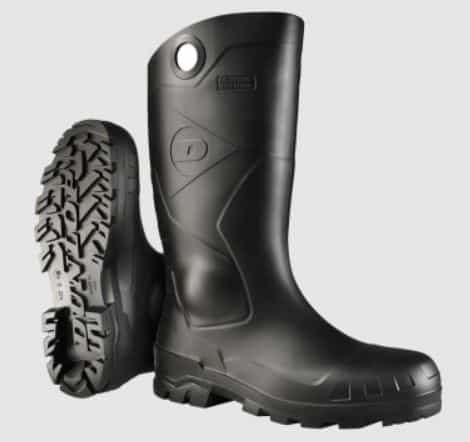
Source: Dunlop
Forget fashion with this pair of Dunlop boots. They made these dependable boots out of PVC. That’s right. You can own boots out of the same vinyl material you probably use in the garage. It only comes in mid-height, so skip this one if you need to wade through deep muck. They cost less than $26 making them a bargain since they reliably protect your feet.
They provide little arch support though. The sizing runs large as opposed to Bogs. With these, you either need thick socks on all the time or you purchase a size smaller than the sizing chart says you need. The tire manufacturer has also made boots for more than 90 years. Beware that the Chesapeake is uninsulated. Your feet will not remain as warm but will stay dry.
Muck Arctic Sport II Mid
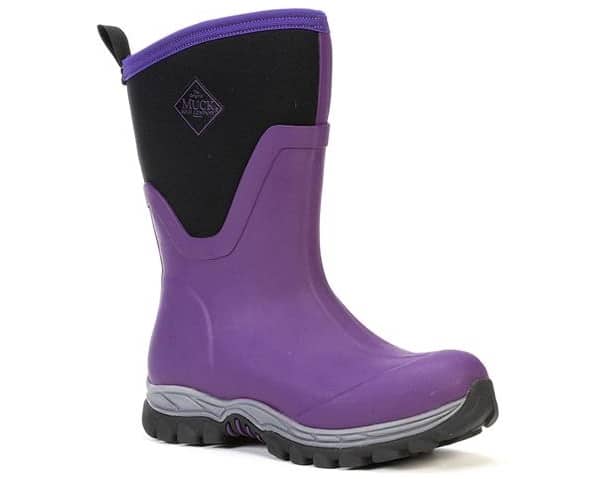
Source: Muck Boot Company
These heavy boots made of rubber and neoprene come in two heights – mid and tall. You might guess by the brand name of Muck, they are meant for boggy, muddy, nasty weather. They just miss actually qualifying as a 7 mm boot since they actually measure 5 mm.
Your feet stay warmer in these since they feature a fleece lining. They offer great arch support but do not slip off easily. The EVA midsole makes them comfortable for long-term wear. All of this comes at a bit of an expense because these shoes cost $124 per pair.
Where can you buy 7mm rubber boots?
You can purchase these styles of boots from most department stores, camping supply stores, agricultural/farm supply stores, and more. You can shop for these boots at campsaver.com, Cabela’s, Farm Supply, and the ubiquitous Walmart. Nearly everyone owns this type of boot, so you can find them in what you might consider unlikely stores such as Macy’s. Yes, you can find designer versions of these mud and muck boots.
Frequently Asked Questions
We know you probably still have questions about these hearty boots. We will try to answer the biggies here.
Are these boots snakebite proof?
No, these are not snake-proof boots. Snake boots are crafted of very thick leather. They are then waterproofed, which likely explains why people confuse them with these.
How do neoprene and Thinsulate differ?
Both of these items represent materials used in some 7 mm rubber boots. You will find neoprene, a synthetic rubber, comprises the outer layer of the boots. It provides waterproofing and insulation. Thinsulate, another synthetic material, provides fibrous thermal insulation on the interior of the clothing. You find gloves, rubber hunting boots, and jackets lined with Thinsulate insulation.
References:
Popular Mechanics: Best Mud Boots
Northern Tool: Gravel Gear Men’s Boots
Keep Dry Feet: Can Snakes Bite Through Rubber Boots
Our Everyday Life: The Differences of Neoprene & Thinsulate

